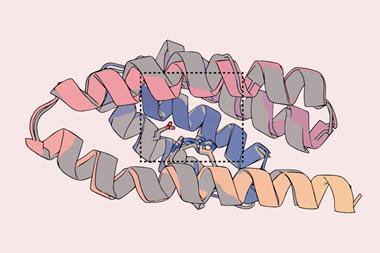RNAi used to combat worms that feed on cotton and corn
Two teams of scientists have uncovered a new way to protect crops from two serious insect pests. The teams made use of a process called RNA interference (RNAi) to silence critical genes in the bodies of the insect larvae and stopped them growing.
The researchers at Monsanto Company in Missouri, US, targeted the western corn rootworm - an insect that causes an estimated $1 billion worth of damage every year.1 James Roberts, who led the team, told Chemistry World: ’By harnessing the cell’s own natural machinery, we can help plants protect themselves from insect pests.’
In 2006, Andrew Fire and Craig Mello were awarded the Nobel Prize in Medicine for their discovery of RNAi, a technique in which tiny pieces of RNA are used to shut down specific genes in a cell.
Roberts’ team first identified a gene in the rootworm that controlled the production of a protein necessary for the rootworm larva to grow. To turn off this gene, they created a mirror image of it in the laboratory, then engineered plants to produce RNA corresponding to this mirror image. When larva feed on the plant they ingest the RNA, which silences the gene and prevents them from growing.
A second team, based at the Shanghai Institute of Biological Sciences, China, targeted the cotton bollworm, a moth larva that causes huge damage to cotton plants.2 Using a similar approach, they silenced the gene that allows the bollworm to tolerate high levels of gossypol - a toxic polyphenol in cotton.
Insecticide-resistant pests are a growing problem for farmers, says Roberts. ’RNAi has great potential in this field because it is a completely different approach and offers a new mode of action for controlling pests,’ he added. ’More importantly, it is complementary to existing approaches and has the potential to contribute to sustainable pest management practices.’
Nordin Zeidner, at the Centers for Disease Control and Prevention in Fort Collins, Colorado, US, has studied the use of RNAi to prevent ticks from spreading disease. ’RNAi is a great way to understand physiology and which genes are important for which functions,’ he told Chemistry World. ’I think this could certainly be useful to control pests in the future, but at the moment it is difficult to apply this method to the large-scale required for commercial agriculture.’
Lewis Brindley
References
et alNature Biotech.et alNature Biotech., 2007; DOI: 10.1038/nbt1352






No comments yet